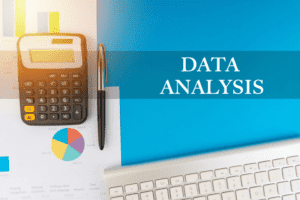
Long-term lease obligations are liabilities related to paying rent for renting office spaces or any other asset/assets. Other current liabilities include all liabilities in accounting other current liabilities except those listed above. Liabilities appear on the balance sheet with a categorization of current and noncurrent liabilities.
As long as you haven’t made any mistakes in your bookkeeping, your liabilities should all be waiting for you on your balance sheet. If you’re doing it manually, you’ll just add up every liability in your general ledger and total it on your balance sheet. As liabilities increase, they may affect a company’s financial health and stability. High levels of debt can lead to increased interest expenses, impacting profitability and potentially leading to insolvency.
What is a Liability Account? – Definition
Speak with an insurance provider or other cannabis professional to understand whether you have adequate insurance for your business size, operations and type of business. Depending on the size and nature of your business, you could expect to pay as little as $500 to $20,000-plus for comprehensive coverage. Your business size, location, assets, policy limits and level of risk affect the final coverage you pay. If you want to invest in the cannabis industry in another way, find the best cannabis penny stocks right now. If the distributor is also a manufacturer, insurance could cost $10,000 to $20,000 annually to cover general liability, commercial property, crop insurance, equipment insurance and workers compensation.
Expenses can be paid immediately with cash, or the payment could be delayed which would create a liability. Recorded on the right side of the balance sheet, liabilities include loans, accounts payable, mortgages, deferred revenues, bonds, warranties, and accrued expenses. Liabilities play a crucial role in evaluating a company’s financial health. By analyzing the types, amounts, and trends of a company’s liabilities, it is possible to gauge its financial position, stability, and risk exposure. A company with too many liabilities compared to its assets may face cash flow problems or increased financial risk. Understanding a company’s liabilities can also help assess its ability to meet debt obligations and the potential for future growth.
Types of Liability Accounts – Examples
Professional liability insurance, or errors and omissions insurance, protects you from liability in case of professional mistakes. Physicians prescribing cannabis, as well as dispensaries, distributors, testing labs and growers, can all benefit from professional liability insurance. The average cost is $61 per month, but that varies by profession, coverage limit and terms. Cultivation includes planting, growing, tending, nurturing, harvesting, grafting, dividing or transplanting a cannabis plant. Production means the separation of cannabis and cannabis resin from the plants from which they are obtained.

Accountants also need a strong understanding of how these debts and obligations function within an organization’s finances. Accounting processes often involve examining the relationships between liabilities, assets, and equity and how these things affect a business’s profitability and performance. When a company deposits cash with a bank, the bank records a liability on its balance sheet, representing the obligation to repay the depositor, usually on demand. Simultaneously, in accordance with the double-entry principle, the bank records the cash, itself, as an asset. The company, on the other hand, upon depositing the cash with the bank, records a decrease in its cash and a corresponding increase in its bank deposits (an asset).
Credit side of the accounting equation:
Successful companies often diversify their sources of financing, ensuring a mix of short-term and long-term liabilities. Prudent financing strategies contribute to stability and resilience. The double-entry accounting system is a fundamental accounting concept where each transaction involves at least two accounts https://www.bookstime.com/ – a debit and a credit. In the context of liabilities, an increase in liabilities is recorded on the credit side. Contingent liabilities are a little different since they are liabilities that might occur. This usually happens because a liability is dependent on the outcome of some type of future event.
- Tail coverage extends coverage for claims made after a policy has expired, ensuring continued protection during periods of transition such as a merger, acquisition, or change in leadership.
- An increase or decrease in current liability and accounts payable will have an impact on working capital, current ratio, days payable, and cash conversion cycle.
- With smaller companies, other line items like accounts payable (AP) and various future liabilities like payroll, taxes will be higher current debt obligations.
- The company must recognize a liability because it owes the customer for the goods or services the customer paid for.
- You might be able to contribute to a retirement account through your employer, often a 401(k) or 403(b) account.
- Expenses can be paid immediately with cash, or the payment could be delayed which would create a liability.
